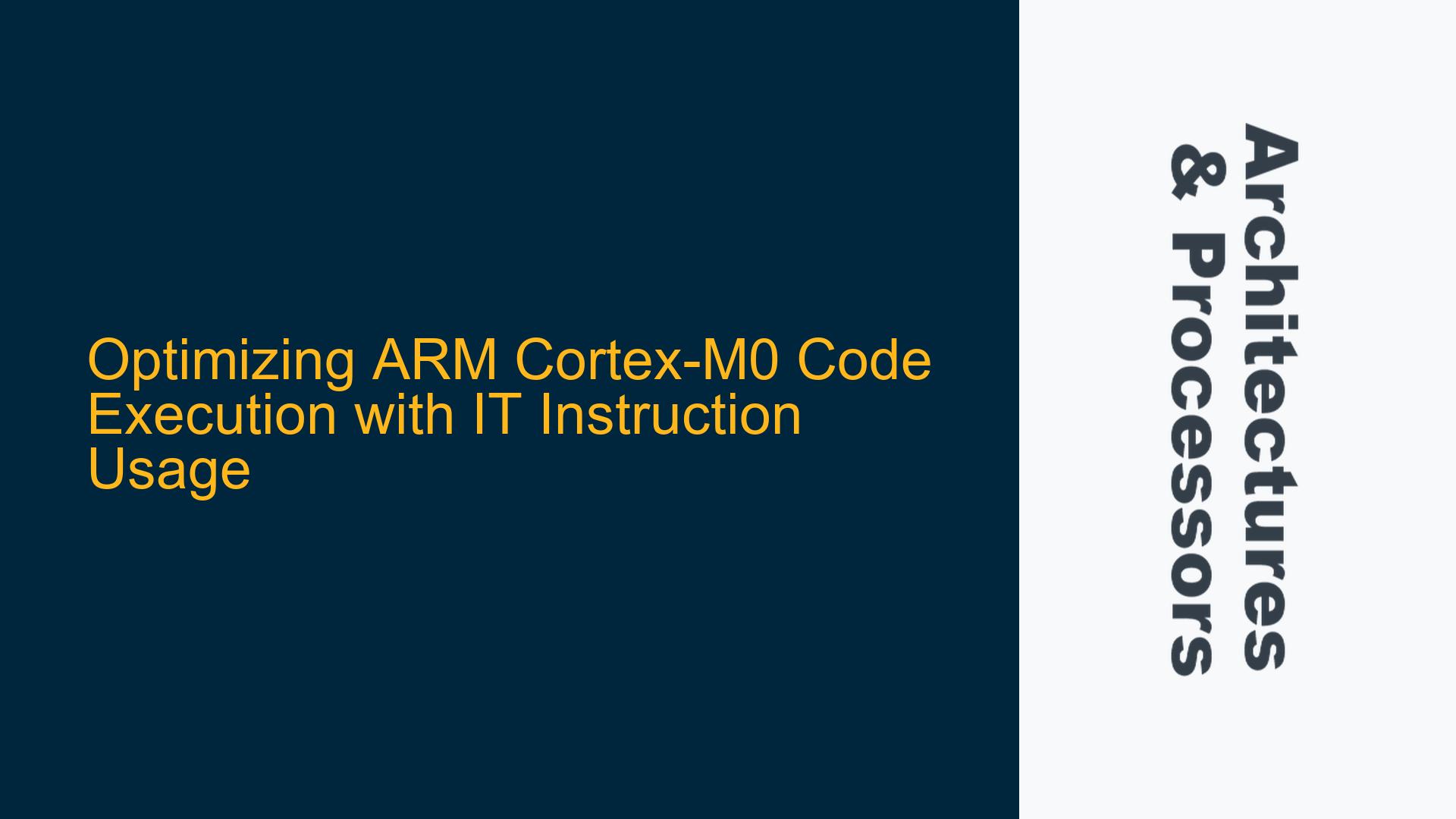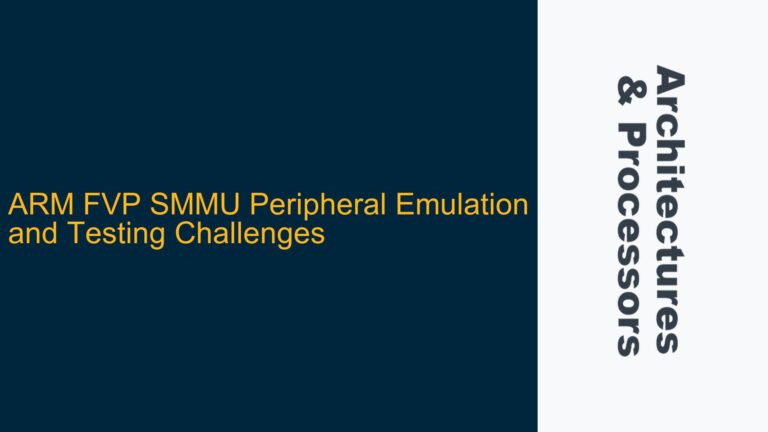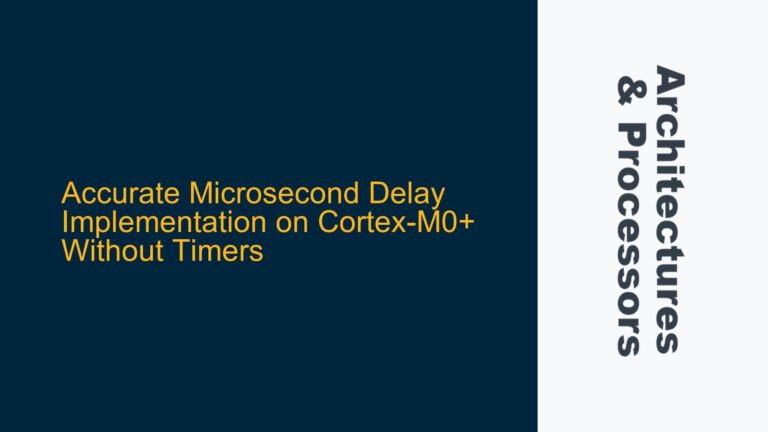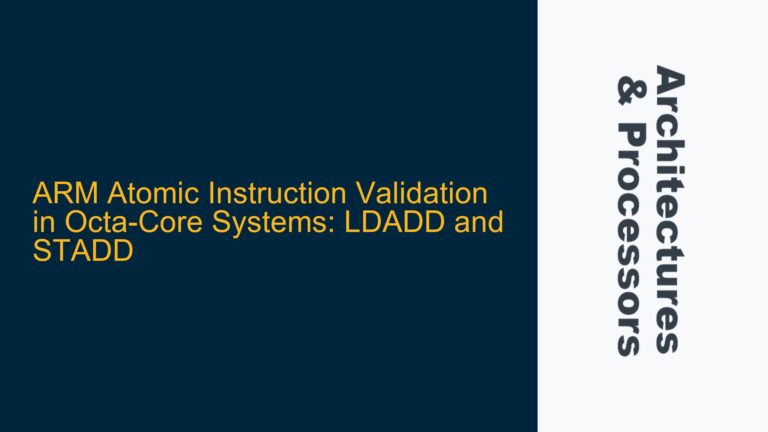ARM Cortex-M0 IT Instruction Misuse and Performance Impact
The ARM Cortex-M0 processor, being a highly efficient and power-optimized microcontroller, relies heavily on the Thumb instruction set to achieve its design goals. One of the key features of the Thumb instruction set is the IT (If-Then) instruction, which allows for conditional execution of up to four subsequent instructions. However, the IT instruction is often misunderstood or misused, leading to suboptimal performance and potential code execution issues. The primary concern revolves around the proper use of the IT instruction in scenarios where conditional execution is required, especially when compared to traditional ARM architectures that utilize condition codes extensively.
In the ARM Cortex-M0, the IT instruction is used to create a block of up to four instructions that execute conditionally based on the condition specified in the IT instruction. This is particularly useful for avoiding branch instructions, which can be costly in terms of cycle count. However, the IT instruction has specific rules and limitations that must be adhered to, such as the prohibition of nesting IT blocks or using certain instructions within an IT block. Misunderstanding these rules can lead to inefficient code or even incorrect behavior.
The performance impact of misusing the IT instruction can be significant. For example, if a developer attempts to nest IT blocks or use an IT instruction where it is not permitted, the processor may either stall or execute instructions incorrectly. This can lead to increased cycle counts, reduced throughput, and potential bugs that are difficult to diagnose. Additionally, the IT instruction’s behavior on the Cortex-M0 differs from that on more advanced ARM cores, such as the Cortex-M4, where conditional execution is more flexible and less restrictive.
IT Instruction Constraints and Misapplication in Thumb Mode
The IT instruction in the ARM Cortex-M0 is subject to several constraints that can lead to misapplication if not properly understood. One of the most critical constraints is that the IT instruction cannot be nested. This means that once an IT block is initiated, another IT instruction cannot be used within the same block. Attempting to do so will result in an undefined instruction exception, causing the processor to enter an error state. This constraint is particularly important when writing complex conditional logic, as developers may inadvertently attempt to nest IT blocks, leading to runtime errors.
Another constraint is that certain instructions are not permitted within an IT block. For example, branch instructions, such as B, BL, and BX, cannot be used within an IT block. This limitation is due to the way the Cortex-M0 handles instruction pipelining and branch prediction. Using a branch instruction within an IT block can disrupt the pipeline and lead to incorrect program flow. Additionally, some instructions that modify the program counter (PC) or the status register (APSR) are also prohibited within an IT block, as they can interfere with the conditional execution mechanism.
The misapplication of the IT instruction can also stem from a misunderstanding of its timing and cycle count implications. On the Cortex-M0, the IT instruction itself takes one cycle to execute, and each subsequent instruction within the IT block also takes one cycle. However, if the condition specified in the IT instruction is not met, the instructions within the IT block are not executed, but the cycle count remains the same. This can lead to inefficiencies if the IT block is used inappropriately, such as in cases where a simple branch would be more efficient.
Furthermore, the IT instruction’s behavior can be counterintuitive when compared to traditional ARM architectures. In ARMv7-A/R architectures, conditional execution is achieved through condition codes, which are part of the instruction encoding. This allows for more flexible and efficient conditional execution, as the condition is evaluated at the instruction level rather than at the block level. On the Cortex-M0, the IT instruction imposes a block-level condition, which can lead to less efficient code if not used correctly.
Correct Usage of IT Instruction and Performance Optimization Techniques
To optimize code execution on the ARM Cortex-M0, it is essential to understand the correct usage of the IT instruction and to apply performance optimization techniques that leverage its strengths while avoiding its pitfalls. The first step in using the IT instruction correctly is to ensure that it is not nested and that prohibited instructions are not used within the IT block. This requires careful planning of the code structure, especially when dealing with complex conditional logic.
One effective technique for optimizing the use of the IT instruction is to minimize the number of instructions within the IT block. Since each instruction within the IT block takes one cycle, regardless of whether the condition is met, it is important to keep the block as short as possible. This can be achieved by moving non-conditional instructions outside of the IT block and only including instructions that are strictly necessary for the conditional logic. For example, if a series of arithmetic operations need to be performed conditionally, only the arithmetic instructions should be included in the IT block, while any setup or cleanup code should be placed outside.
Another optimization technique is to use the IT instruction in conjunction with other Thumb instructions that support conditional execution. For example, the CMP (Compare) and TST (Test) instructions can be used to set the condition flags, which can then be used by the IT instruction to control the execution of subsequent instructions. This allows for more efficient conditional logic, as the condition flags can be set once and then used multiple times within the IT block.
In cases where the IT instruction is not suitable, such as when dealing with complex conditional logic or when prohibited instructions are required, it may be more efficient to use branch instructions instead. While branch instructions take three cycles on the Cortex-M0, they can be more efficient than using multiple IT blocks or long IT blocks that result in wasted cycles. Additionally, branch instructions can be used to implement more complex control flow, such as loops or function calls, which cannot be easily achieved with the IT instruction.
To further optimize code execution, developers should also consider the use of compiler optimizations and profiling tools. Modern compilers, such as ARM GCC and ARM Clang, are capable of generating highly optimized Thumb code that makes efficient use of the IT instruction. By enabling compiler optimizations and using profiling tools to identify performance bottlenecks, developers can ensure that their code is both efficient and correct.
In conclusion, the IT instruction is a powerful tool for optimizing code execution on the ARM Cortex-M0, but it must be used correctly to avoid performance issues and runtime errors. By understanding the constraints of the IT instruction, applying optimization techniques, and leveraging compiler tools, developers can achieve efficient and reliable code execution on the Cortex-M0.






